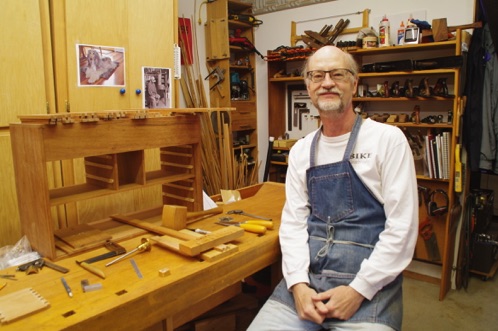A Fine Art Hobby
Since 1980, I’ve spent countless hours in my woodshops making everything from furniture to tools. I learned much of my craft from reading; see the Recommended Books page for my favorites. I also credit my dad for showing me how to do all kinds of practical things, and a little bit of woodshop class in junior high. Above all, it takes lots of practice and a decent space to work, though I did start off in the spare bedroom of my apartment in Livermore for a few years!
My designs and interests are generally modern, as typified by the work of James Krenov. I prefer traditional hand work and fine joinery that you would see in furniture built a couple of hundred years ago. Only rarely do I take on a “production” job requiring acres of plywood and endless hours of machine work.
The advantages of hand tool woodworking are many. Mainly, you gain intimate contact and a relationship with the material that is hard to obtain when heavy machinery is doing much of the work. Also, the tools are simple, relatively inexpensive, quiet, and don’t make a huge mess. There is great joy to be found in this kind of craft. Please enjoy my portfolio pages.
One Hundred Years Ago

Here’s a pair of photos taken almost exactly 100 years apart. My grandfather, Oscar, came from Sweden in the late 1800s and worked as a carpenter in Evanston, Illinois, where I’m also from. He and a partner ran a thriving general carpentry business that kept their families alive through the depression. Perhaps his best-known project involved many years of finish carpentry work in the famous Bahai temple in Wilmette, Ill. In our right hands sits a No. 8 jointer plane of unknown manufacture. The very same one. I inherited a few of his tools and some, like this plane, are still in regular use. So maybe woodworking is genetic after all.
